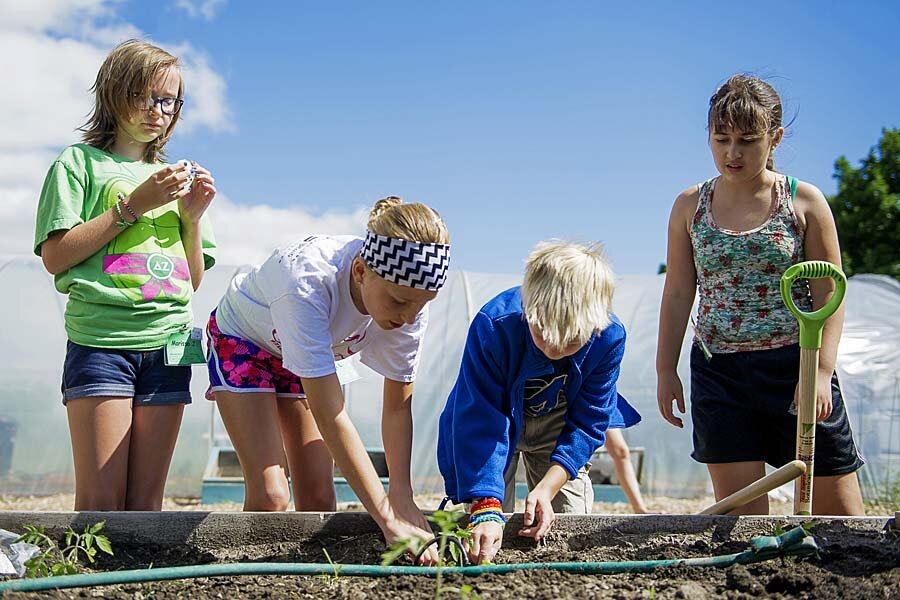How school gardens can teach skills and unify communities
Loading...
The Kitchen Community, a nonprofit organization in Boulder, Colorado, created a new model for designing and implementing school learning gardens in cities all over the nation. The gardens give students the opportunity not only to learn firsthand where their food comes from, but also higher-level skills in food production.
The national trend to bring healthier food into schools has been amplified by on-location gardens that provide fresh produce to cafeterias, as well as hands-on learning opportunities. While, in theory, getting kids interested in growing their own food can be fruitful, the reality is that such a venture requires constant upkeep, time, and clever methods for involving young students in the process. The Kitchen Community wants to make it a reality for communities all across the country with a new approach to what school gardens can teach students of all ages.
“The Kitchen Community’s mission is about accelerating the school food movement,” says Tighe Hutchins, a member of the organization’s executive team. “Our CEO, Kimbal Musk, looked critically at school gardens in Boulder, Colorado, and across the country, and saw the importance of them to a community and neighborhood. We designed a concept that would allow every school and community to have that experience that also lasts for 20 to 30 years.”
Focusing on low-income schools, the organization has created nearly 300 gardens in six cities. They prioritize schools with a high percentage of free-and-reduced-lunch students because the food provided at these schools is often lower quality due to their limited resources.
“Students eat more than 50 percent of their meals at school,” Hutchins says. “School lunch programs don’t always provide healthy options for students in a way that they are able to understand what healthy food is. We want to switch from a toxic food cycle that is generational to a healthy food cycle, to knowing where food comes from.”
School gardens already exist all over the country, but The Kitchen Community’s real mission is to make them sustainable and persistent. As such, the learning gardens they design become more than just a green space: they are an outdoor classroom where students are taught to interact with and understand growing food.
The organization has designed a curriculum that follows the growing seasons. The curriculum comes with various lessons for different times of the year. The Kitchen Community also shares how-to videos online.
Students learn lessons about the planting and growing processes, such as pests, soil nutrition, weeding, and mulching. Then, at the end of the season, lessons continue with harvesting, which includes not only how to collect produce but also how to prepare fresh food and maintain healthy eating habits. In one program, elementary students learn to grow various greens and herbs so that by the end of the semester they’ve produced their own salad.
The entrepreneurship program has similar goals but aimed at high school students: using the garden to teach valuable, transferable skills. In Chicago, students at the Prosser Career Academy sell their garden’s produce to local Chicago restaurants and businesses. In the program’s first year, they raised more than US$4,000 for participating local schools.
The gardens serve as both classroom and playground, and The Kitchen Community hopes to bring them to schools all across the country.
“I always find it really fascinating to talk to students who are uninterested in the garden, those who have a hesitation or fear of getting their hands dirty,” Hutchins says. “Six to nine months later, I’ll ask the teachers how they are liking it, and those teachers point out that those students that were hesitating are now thriving.”
This story originally appeared on Food Tank.





